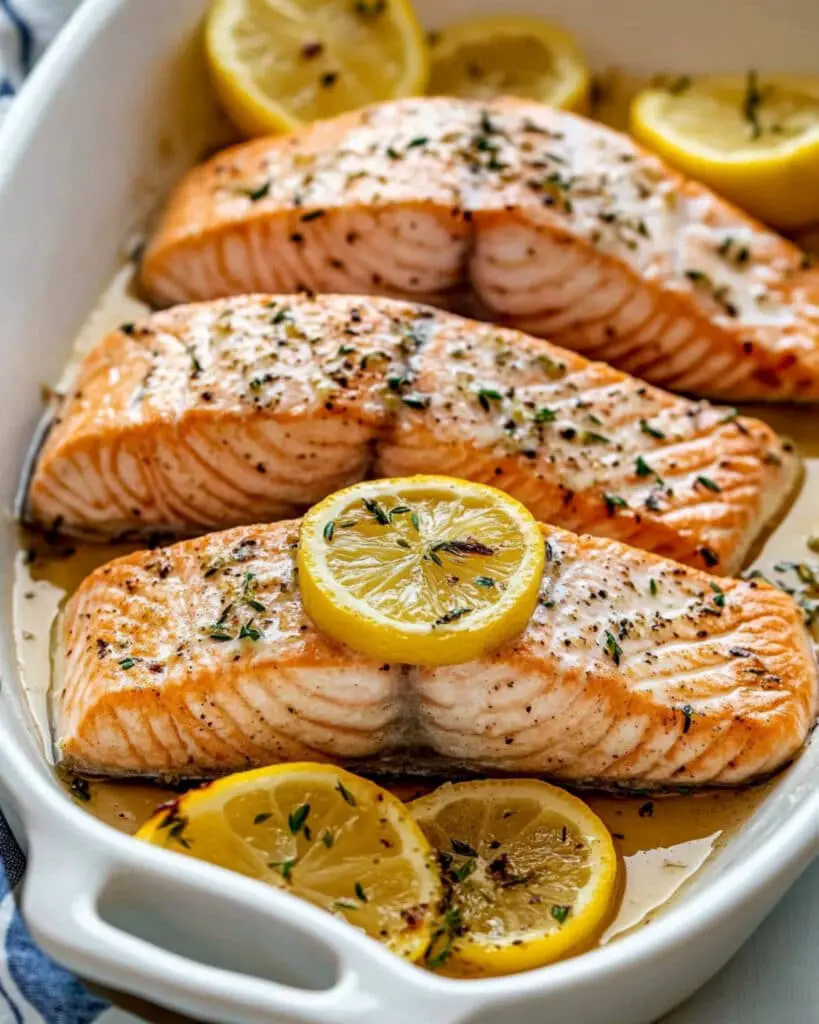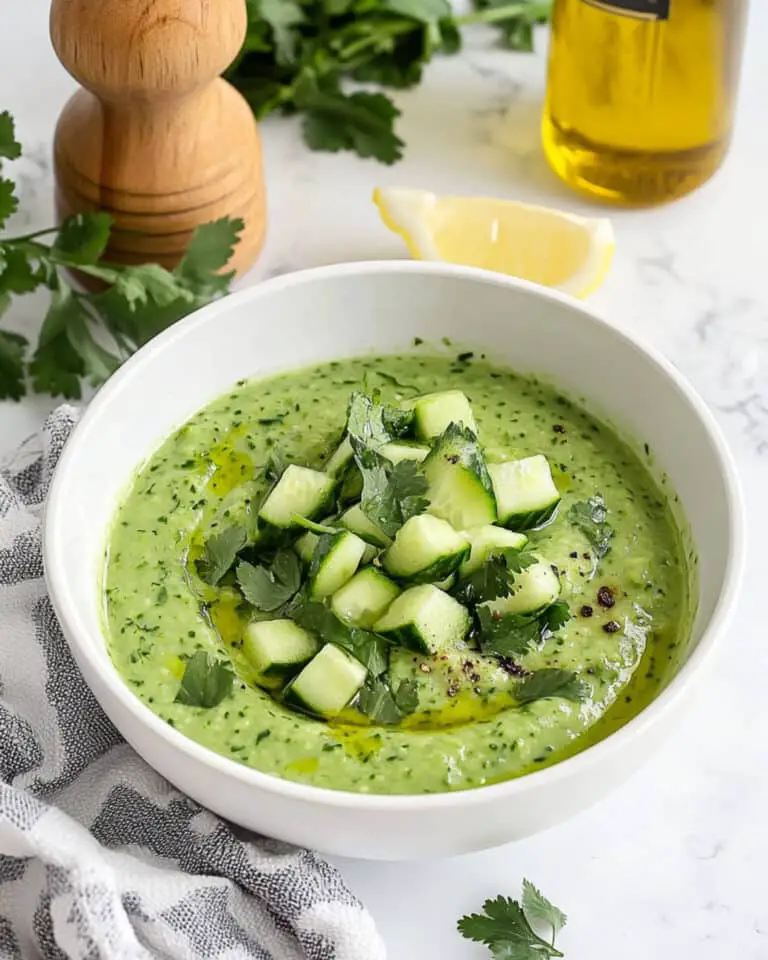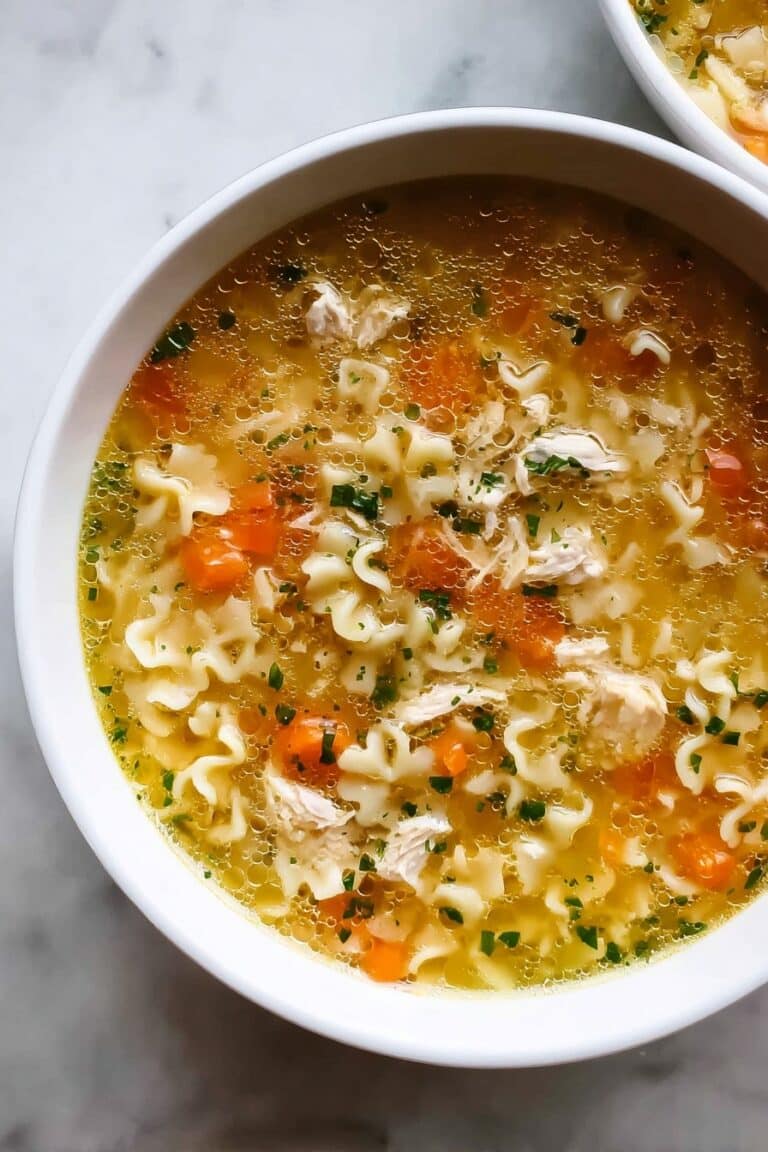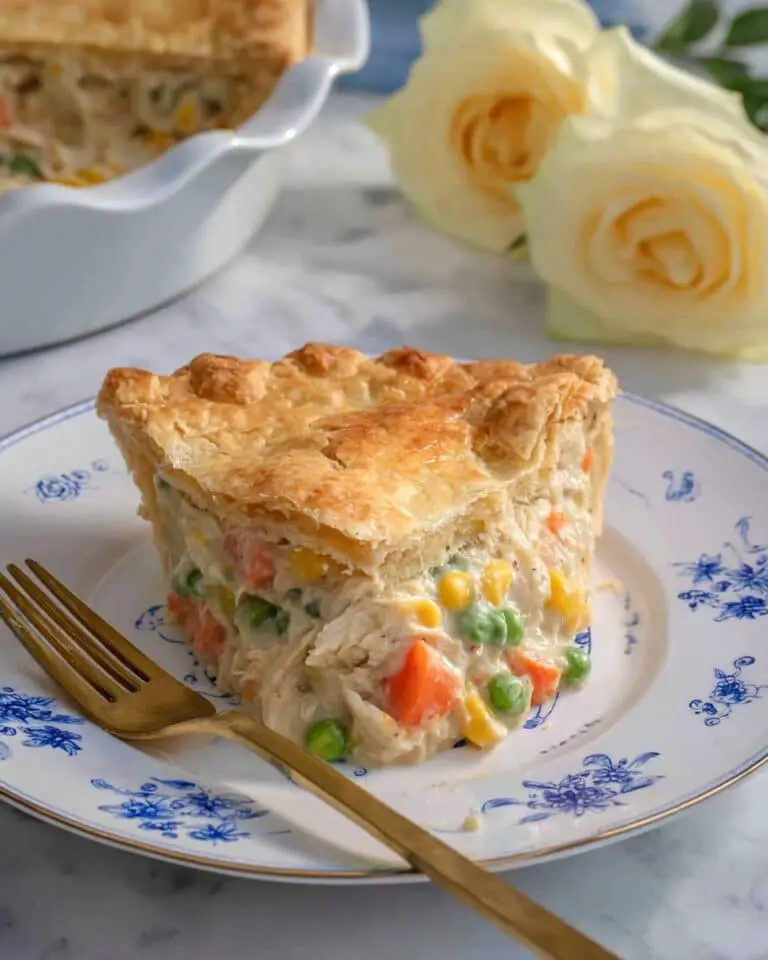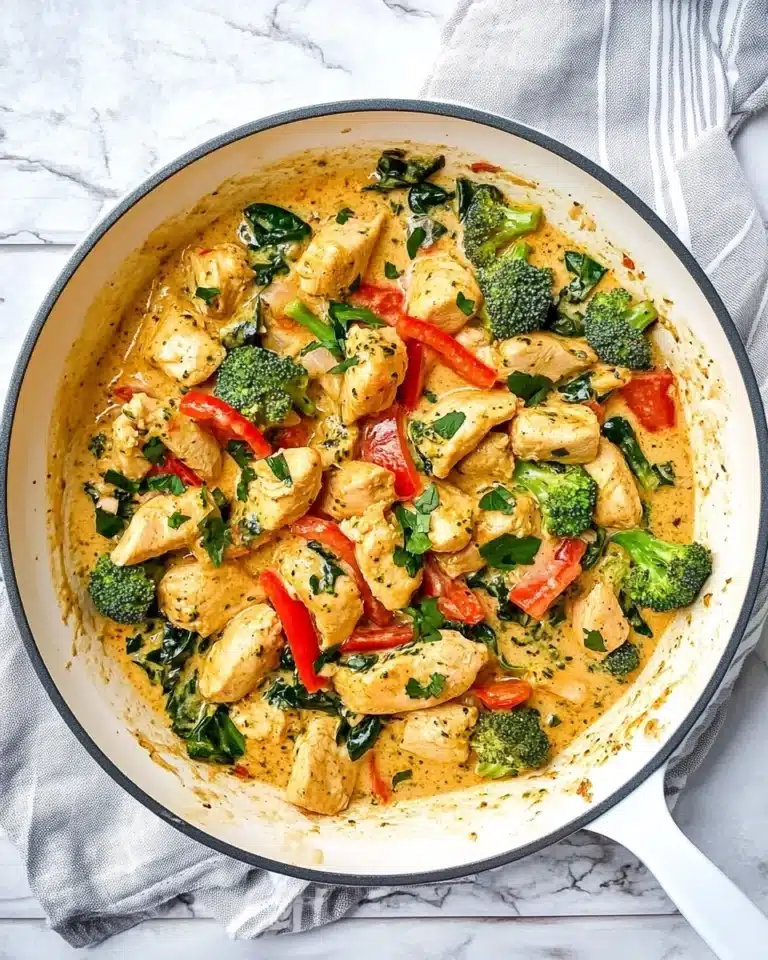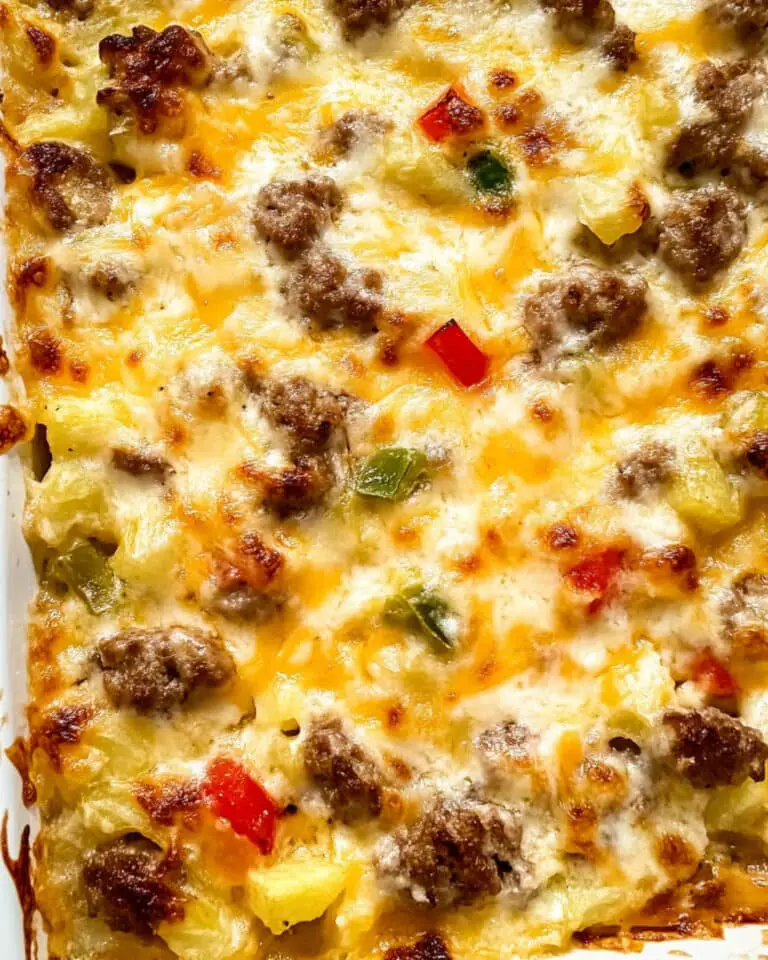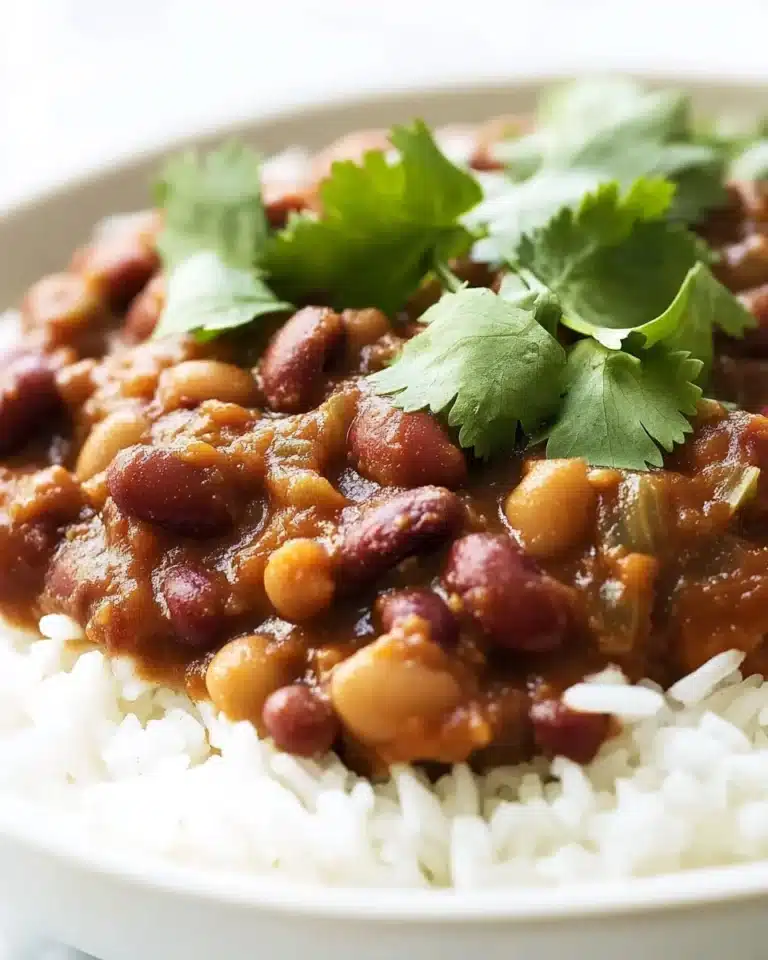
This Easy Baked Salmon is a weeknight dinner dream! Flaky, tender salmon fillets, seasoned simply with salt, pepper, and fragrant tarragon, are baked to perfection in just minutes. It’s a healthy, delicious, and incredibly easy way to get your seafood fix. Trust me, this will become your go-to salmon recipe!
Why You’ll Love This Recipe
- Effortless Elegance: This recipe is so simple, yet the results are so impressive. It’s perfect for a quick weeknight meal or a more elegant dinner party.
- Healthy & Delicious: Salmon is packed with omega-3 fatty acids and protein, making it a nutritious and delicious choice.
- Flavorful Simplicity: The combination of lemon, tarragon, and olive oil perfectly complements the natural flavor of the salmon. It’s a classic and irresistible combination.
Ingredients
- Salmon fillets: The star of the show! Look for fillets that are about 6 ounces each.
- Salt: Enhances the natural flavor of the salmon.
- Pepper: Adds a touch of heat and depth.
- Olive oil: Adds richness and helps to keep the salmon moist.
- Freshly squeezed lemon juice: Adds a bright and citrusy flavor.
- Dried tarragon: Adds a subtle anise flavor that pairs beautifully with salmon.
Note: You’ll find the complete list of ingredients, along with their exact measurements, in the printable recipe card at the bottom of this post.
How to Make Easy Baked Salmon
Step 1: Preheat and Prep
Preheat the oven to 400°F. Grease a baking sheet with cooking spray to prevent the salmon from sticking.
Step 2: Season the Salmon
Place the salmon fillets on the prepared baking sheet. Season them with salt and pepper.
Step 3: Make the Lemon-Herb Mixture
In a small bowl, combine the olive oil, lemon juice, and dried tarragon. Brush this mixture generously over the salmon fillets, both top and bottom.
Step 4: Bake the Salmon
Transfer the baking sheet to the preheated oven and bake the salmon for 12-15 minutes, or until it is opaque and flaky. If you like a bit of golden color on top, you can broil it for 1-2 minutes, but watch it closely as it can burn quickly.
Step 5: Garnish and Serve
Garnish the baked salmon with lemon slices, if desired. Serve immediately and enjoy!
Pro Tips for Making the Recipe
- Skin On or Off: If your salmon fillet has skin on one side, leave it on! It helps to prevent sticking and can also help to prevent overcooking.
- Use a Thermometer: The USDA recommends cooking fish to an internal temperature of 145°F. Using an instant-read thermometer is the best way to ensure that your salmon is perfectly cooked.
- Don’t Overcook: Overcooked salmon is dry and tough. Watch it closely as it nears the end of the cooking time to avoid this.
- Remove Pin Bones: Pin bones are small, thin bones that can be present in salmon fillets. Run your fingers along the fillet to locate them and gently remove them with tweezers before cooking.
How to Serve
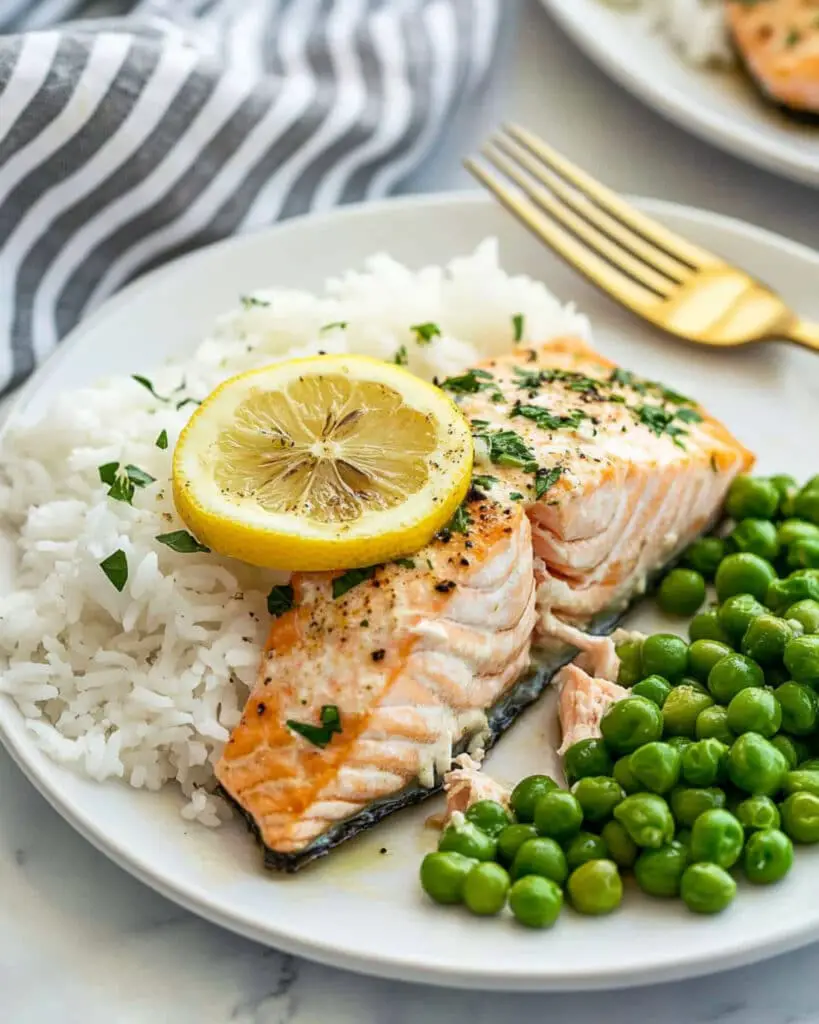
Baked salmon is incredibly versatile and can be served with a variety of sides. Here are a few ideas:
- Roasted Vegetables: Asparagus, broccoli, Brussels sprouts, or any of your favorite roasted veggies pair beautifully with salmon.
- Quinoa or Rice: A simple side of quinoa or rice is a great way to round out the meal.
- Salad: A fresh green salad adds a light and refreshing element.
- Lemon wedges: Extra lemon wedges are always a good idea for adding a burst of fresh flavor.
Make Ahead and Storage
Storing Leftovers
Refrigerate cooked salmon in a shallow airtight container or wrap it tightly in aluminum foil or plastic wrap for 2-3 days.
Freezing
If you won’t be eating the leftover salmon within a few days, you can freeze it in an airtight container for about 1 month.
Reheating
Reheat leftover salmon gently in the oven or microwave to avoid drying it out.
FAQs
1. Can I use frozen salmon?
Yes, you can use frozen salmon fillets. Make sure to thaw them completely before cooking.
2. How do I know when the salmon is cooked through?
The best way to tell if the salmon is cooked through is to use an instant-read thermometer. It should reach an internal temperature of 145°F. The salmon will also flake easily with a fork when it is done.
3. Can I use different herbs?
Yes, you can use other herbs such as dill, thyme, or rosemary instead of tarragon.
4. Can I grill the salmon instead of baking it?
Yes, you can grill the salmon. Preheat your grill to medium-high heat and grill the salmon for about 4-5 minutes per side, or until it is cooked through.
Print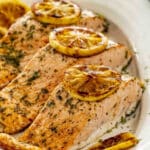
Easy Baked Salmon Recipe
- Prep Time: 5 minutes
- Cook Time: 15 minutes
- Total Time: 20 minutes
- Yield: 4 servings
- Category: Main Course, Dinner
- Method: Baking
- Cuisine: (General/Versatile)
Description
This Easy Baked Salmon recipe delivers perfectly cooked, flaky salmon fillets every time. Simply season, brush with a flavorful lemon-herb mixture, and bake. It’s a quick, healthy, and delicious meal perfect for any weeknight.
Ingredients
- 4 salmon fillets (about 6 ounces each)
- 1/2 teaspoon salt (or to taste)
- 1/2 teaspoon pepper (or to taste)
- 2 tablespoons olive oil
- 2 tablespoons freshly squeezed lemon juice
- 1 teaspoon dried tarragon
Instructions
- Preheat and Prepare: Preheat oven to 400°F. Grease a baking sheet with cooking spray.
- Season the Salmon: Place salmon fillets on the prepared baking sheet. Season with salt and pepper.
- Lemon-Herb Mixture: In a small bowl, combine olive oil, lemon juice, and dried tarragon. Brush this mixture generously over the salmon fillets, top and bottom.
- Bake: Transfer the baking sheet to the preheated oven. Bake for 12-15 minutes, or until the salmon is opaque and flaky.
- Broil (Optional): For a bit of golden color on top, broil for 1-2 minutes. Watch closely to prevent burning.
- Serve: Garnish with lemon slices (if desired) and serve immediately.
Notes
- Skin On or Off: Leaving the skin on helps prevent sticking and overcooking.
- Use a Thermometer: The USDA recommends cooking fish to an internal temperature of 145°F. Use an instant-read thermometer for accuracy.
- Don’t Overcook: Overcooked salmon is dry. Watch closely towards the end of the cooking time.
- Remove Pin Bones: Run your hand over the fillets to locate and gently remove any pin bones with tweezers.
- Leftovers: Use leftover salmon for salmon salad sandwiches.
- Practice Makes Perfect: Don’t be discouraged if your first attempt isn’t perfect. Using a thermometer is the most reliable way to ensure doneness. Moist and flaky is the goal!
- Refrigerate Leftovers: Store cooked salmon in a shallow airtight container or tightly wrapped in foil or plastic wrap for 2-3 days.
- Freeze Leftovers: For longer storage, freeze in an airtight container for up to 1 month.
Nutrition
- Serving Size: 1 salmon fillet
- Calories: 350
- Sugar: 1g
- Sodium: 300mg
- Fat: 20g
- Saturated Fat: 4g
- Unsaturated Fat: 15g
- Trans Fat: 0g
- Carbohydrates: 2g
- Fiber: 0g
- Protein: 35g
- Cholesterol: 100g

